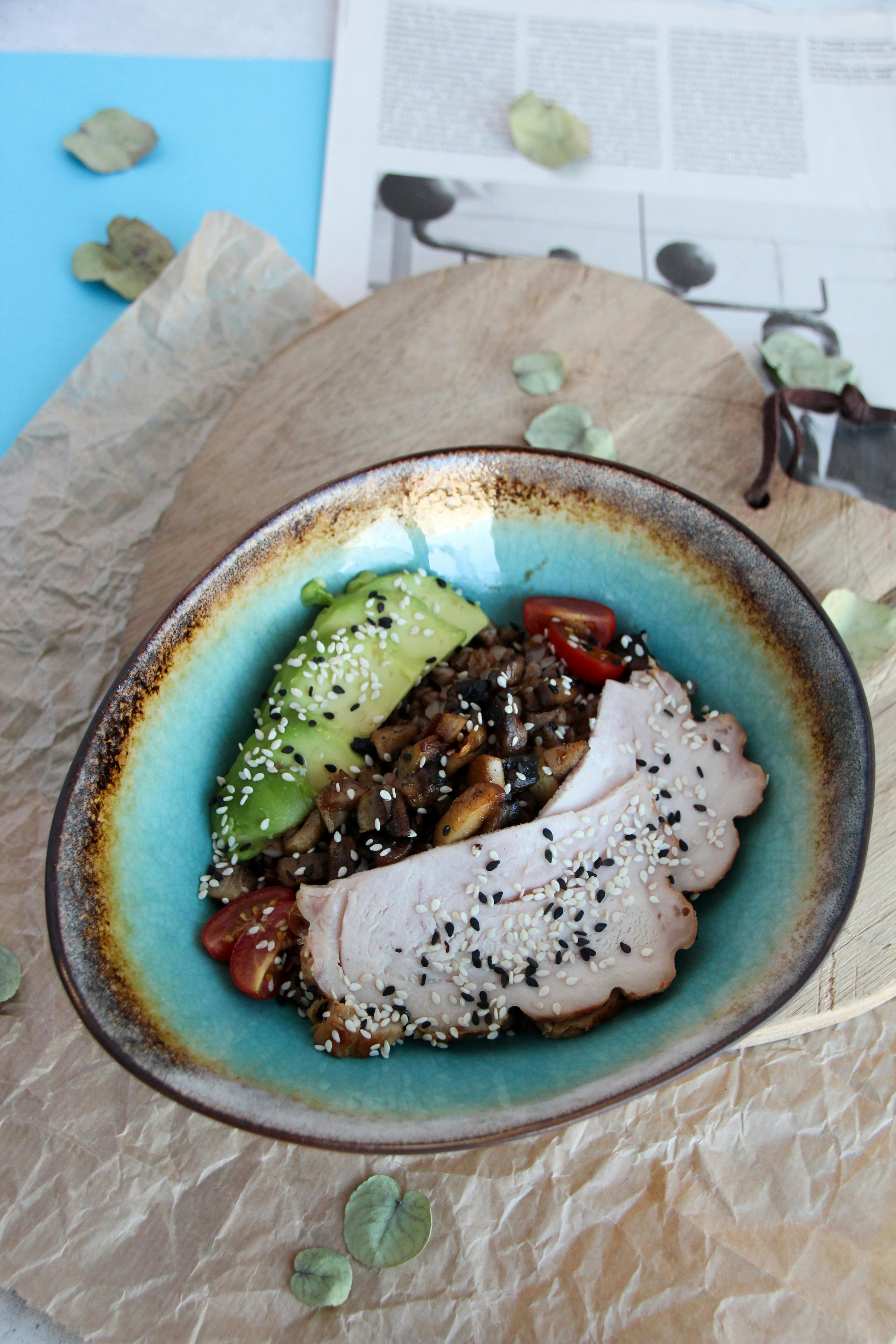
Smart Guide to Low Residue Diet for Effective Colonoscopy Preparation in 2025
Preparing for a colonoscopy can be a daunting task, especially when it comes to dietary restrictions. A low residue diet plays a crucial role in ensuring a successful procedure and optimal colon health. This guide provides a comprehensive overview of the low residue diet, outlines effective colonoscopy preparation techniques, and highlights the significance of digestive health. Ultimately, understanding the pre-procedure nutrition aspects and dietary choices can enhance the effectiveness of the procedure and ensure comfort throughout the process.
As we navigate the guidelines and recommendations for colonoscopy preparation, you'll find practical tips and meal suggestions rooted in nutritional advice. The importance of hydration, easy-to-digest foods, and avoiding high fiber foods will be emphasized, making this guide an essential resource for anyone facing a colonoscopy.
Key takeaways include understanding the significance of dietary fiber limits, effective bowel cleansing strategies, and a well-rounded meal plan that supports successful colonoscopy outcomes. Let’s dive into the essentials of the low residue diet!
Essential Components of a Low Residue Diet
Building on the fundamentals of colonoscopy preparation, a low residue diet aims to minimize the amount of undigested food and waste in your digestive system. This is critical for ensuring a clear view of the colon during the procedure. The primary goals are to reduce fiber intake, limit gas production, and facilitate effective bowel cleansing.
Understanding Dietary Fiber Limitations
A low residue diet generally involves a significant reduction in dietary fiber, which can be achieved by avoiding high fiber foods. Foods like whole grains, nuts, seeds, and most fruits and vegetables should be limited. Instead, focus on easy-to-digest foods such as refined grains, lean protein sources, and low-fiber options. This not only simplifies digestion but also helps in preparing the GI tract for examination.
Identifying Low Residue Food Options
To streamline your meal planning, it's essential to know which foods align with a low residue diet. Safe options include white bread, pasta, rice, eggs, fish, and dairy products like yogurt. Among these, consider incorporating clear liquids, such as broths and strained juices, to maintain hydration and promote digestive effectiveness. This careful selection enhances the comfort and effectiveness of the colonoscopy procedure.
Meal Timing Before the Procedure
Timing your meals appropriately before the procedure is vital for successful bowel preparation. Aim to have your final meal from the low residue options around 24 hours before your colonoscopy. Gradually transition to a clear liquid diet, which can include water, clear soups, and gelatin. This phase will facilitate the cleansing of the digestive system while minimizing discomfort during the colonoscopy.
Hydration Strategies for Preparation
Staying hydrated is equally important as following a low residue diet. Water should be your go-to beverage throughout the preparation period. Consider drinking electrolyte solutions or clear broth to maintain hydration levels. This support not only aids in digestion but also enhances the overall effectiveness of colonoscopy preparation, ultimately leading to better health outcomes.
Common Mistakes to Avoid
During colonoscopy preparation, individuals often overlook essential dietary guidelines, leading to potential complications. Common mistakes include consuming high-fiber foods, failing to hydrate adequately, and ignoring meal timings. Ensure to stick to the low residue food list and consult your healthcare provider for tailored advice. This proactive approach significantly reduces the risk of discomfort and enhances the success rate of the procedure.
Formulating a Low Residue Meal Plan
With these basics established, crafting a specific meal plan for the low residue diet is crucial for a successful colonoscopy. This section will provide practical insights on meal suggestions and recipes tailored to meet dietary restrictions while ensuring nutritional adequacy.
Sample Low Residue Meal Ideas
Creating a diverse range of meals can make a low residue diet easier to manage. For breakfast, opt for scrambled eggs with white toast; for lunch, consider chicken broth with cornbread. Dinner could include baked fish and white rice. Snacks can feature low fiber options like yogurt or solitary crackers. This planned variety helps maintain nutritional balance, making compliance with dietary restrictions more achievable.
Tips for Easy-To-Digest Recipes
Preparing simple, easy-to-digest recipes can make dietary adherence less challenging. Aim for dishes that require minimal preparation and cooking, like boiled potatoes and baked chicken. Utilizing herbs for flavor instead of heavy spices will also enhance palatability while sticking to low residue requirements. Thus, this not only supports digestive comfort but helps improve meal enjoyment.
Pre-Colonoscopy Checklist for Dietary Choices
Maintaining a structured checklist throughout your preparation can simplify dietary choices. Include reminders for when to start your low residue meals, when to transition to liquids, and a list of acceptable foods. Following these personal guidelines minimizes the chances of dietary errors while increasing your comfort level during the entire process.
Role of Probiotics in Colon Prep
Incorporating probiotics can be beneficial for digestive health before proceeding with colonoscopy preparation. They help balance gut flora and may ease digestive symptoms resulting from dietary changes. Including probiotic-rich foods, such as yogurt, in your low residue diet can promote a smoother transition while navigating dietary restrictions.
Consulting Healthcare Professionals
Always communicate with your healthcare provider about any dietary adjustments before your colonoscopy. Professional guidance helps tailor your low residue diet and ensures that it meets your unique needs. Their input can provide reassurance and more personalized dietary options, ultimately promoting a successful health outcome.
Navigating the Liquid Diet Phase
Transitioning to a clear liquid diet is a significant step in colonoscopy preparation. This phase also prepares the digestive system while ensuring thorough cleansing and sets the stage for optimal results during the procedure.
Components of a Clear Liquid Diet
A clear liquid diet includes transparent, easily digestible items such as water, tea, clear broth, apple juice, and gelatin. This phase allows your digestive system to rest while still providing hydration. It's vital to stay committed to these options to achieve an effective bowel cleansing process, ensuring discomfort-free colonoscopy success.
Hydration Techniques During This Phase
Staying hydrated is imperative when following a clear liquid diet. Keep a water bottle nearby to remind yourself to drink frequently. Electrolyte-replenishing drinks can be beneficial to prevent dehydration during this time. Monitoring fluid intake will not only prepare your body for the procedure but contribute towards overall digestive health.
What to Expect During the Liquid Phase
Experiencing hunger or longing for solid foods during the clear liquid phase is common. Diversify your liquid options to alleviate boredom and enhance hydration. Consuming broths with varying flavors can provide temporary satisfaction. Understanding that this phase is temporary can support your emotional well-being as you prepare for the procedure.
Post-Liquid Phase Considerations
As you conclude the clear liquid phase, return to a low residue diet slowly to allow your digestive system to recover. Begin with easy-to-digest foods before reintroducing firmer textures. This gradual transition aids in managing bowel movements post-procedure and prevents discomfort, supporting a successful recovery.
Maintaining Digestive Health After Colonoscopy
Following your colonoscopy, continuing to prioritize digestive health is essential. Incorporate high fiber foods slowly and progressively, monitoring your body's responses. Cultivating healthy eating habits post-procedure can help avoid digestive challenges in the future, ensuring sustainable well-being.
Emphasizing Pre-Procedure Nutrition
With these insights, understanding the broader context of pre-procedure nutrition and its implications for colon health fosters better colonoscopy understanding. Proper nutrition before the examination can enhance outcomes and contribute to long-term digestive health.
Nutrition Tips for Optimal Colonoscopy Preparation
Considerations for nutrition before a colonoscopy not only revolve around food choices but also include strategic timing. Regularly engage in discussions with your healthcare team regarding nutrition recommendations. Staying informed empowers your ability to make nutritious choices, ensuring comfort and support during preparation.
Importance of Hydration in Preparation
Hydration plays an essential role in the colonoscopy prep process. Prioritize drinking adequate fluids leading to your procedure day. This not only enhances digestive function but ensures that your body is primed for effective bowel cleansing. Take note of hydration strategies as they can significantly affect your comfort levels throughout the preparation process.
Monitoring Emotional Well-Being During Preparation
The emotional aspect of preparing for a colonoscopy should not be overlooked. Stress management techniques, such as mindfulness exercises or light physical activity, can help ease anxiety. Be open to discussing feelings of apprehension with your provider. Emotional comfort adds to the overall effectiveness of your colonoscopy preparation and contributes to a successful outcome.
Understanding the Role of Support Networks
Engaging with support networks can ease the preparation process. Sharing experiences and learning from others who have faced similar procedures can boost confidence and alleviate anxiety. Seek out community resources related to colon health for additional insights and encouragement; this creates a comprehensive support system that focuses on well-being during preparation.
Here’s How to Cope with Colon Prep Discomfort
While navigating the colon prep process, discomfort can arise. Developing coping strategies, such as distraction techniques or soothing warm baths, can help alleviate temporary discomfort. Preparing mentally and physically diminishes the impact of prep and helps the process feel more manageable.
Common Questions About Preparing for Colonoscopy
As you consider colonoscopy preparation, various questions may arise regarding dietary choices, hydration, and the overall process. Let’s address some of the common queries that may enhance your understanding and ease the journey ahead.
What foods should I avoid before a colonoscopy?
Avoid high-fiber foods like whole grains, nuts, seeds, and most fruits and vegetables. Focus on easy-to-digest options such as white bread, eggs, and refined grains to ensure effective bowel cleansing without complications.
How important is hydration during preparation?
Hydration is crucial for successfully completing colon prep. Maintaining adequate fluid intake helps facilitate digestive health, supports bowel cleansing, and minimizes discomfort during the procedure.
What can I expect during the colonoscopy procedure?
During a colonoscopy, your healthcare provider will visually examine the colon using a flexible tube. It emphasizes the importance of an effective prep; a clear colon allows for optimum examination accuracy, and any abnormalities can be readily identified.
How do probiotics fit into my colon prep?
Incorporating probiotics before your procedure may enhance gut health and digestion. They can help reduce potential gastrointestinal issues that arise from dietary restrictions, providing an added benefit during preparation.
What should I eat after the colonoscopy?
Post-colonoscopy, begin with low fiber foods and gradually reintroduce higher-fiber options as your digestive system adjusts. Hydrate adequately and consume nutritious meals to support recovery and maintain digestive health.
Visual Aid: Low Residue Diet

This smart guide outlines effective strategies, nutritional interventions, and practical tips to navigate low residue diets for successful colonoscopy preparation. For additional resources, consider consulting these informative articles on pre-colonoscopy guidelines and managing dietary changes.
Final Thoughts on Colonoscopy Preparation
In conclusion, preparing for a colonoscopy with a low residue diet emphasizes the importance of mindful dietary choices, hydration, and proactive engagement with healthcare providers. By implementing the strategies discussed in this guide, you can enhance your colonoscopy experience and support your overall digestive health. Embracing these principles not only fosters effective bowel cleansing but also sets the foundation for healthy digestion moving forward.

By easing the preparation process and adhering to a low residue diet, you can navigate your colonoscopy with confidence, ensuring both comfort and control over your health.